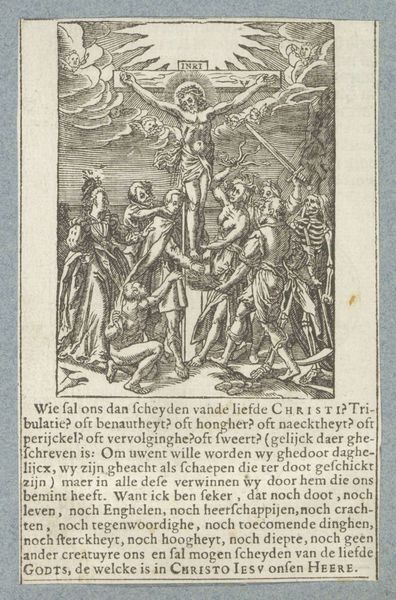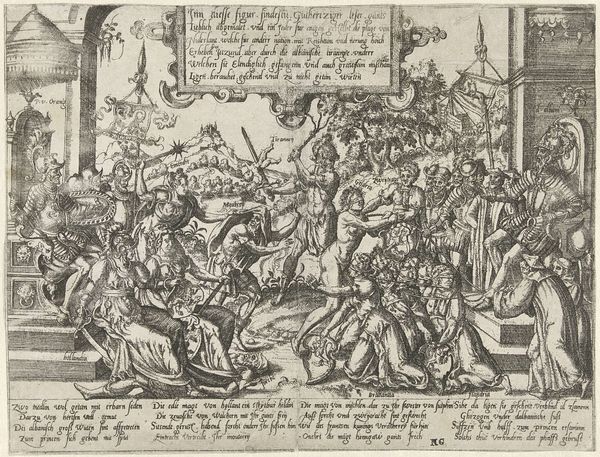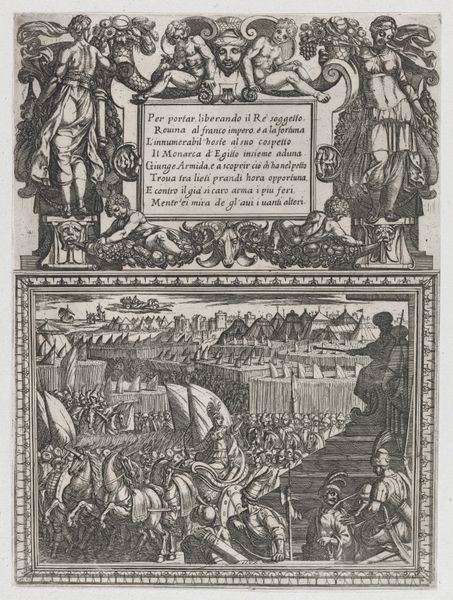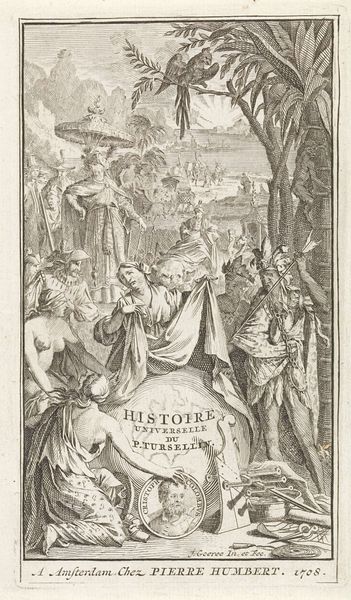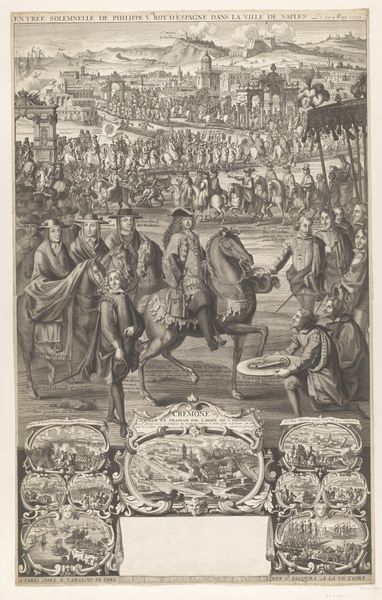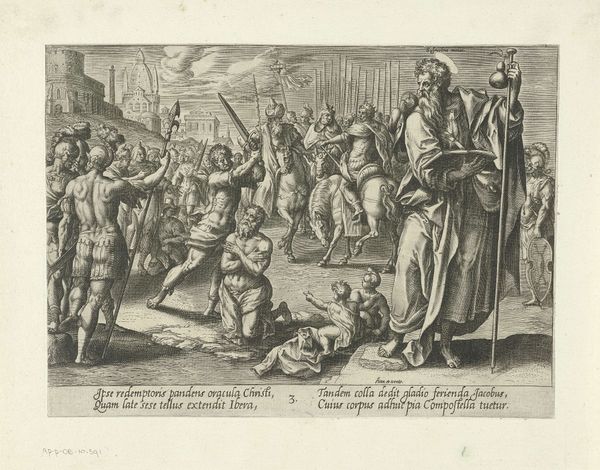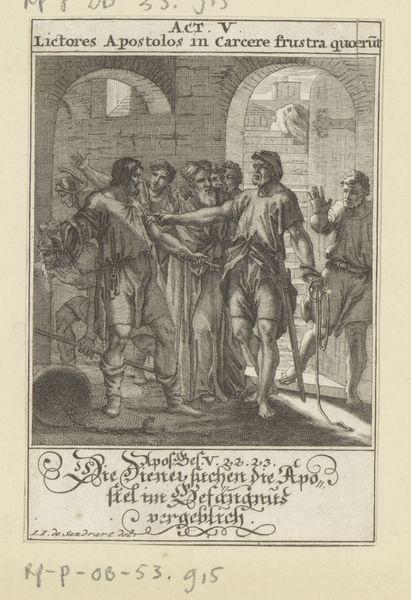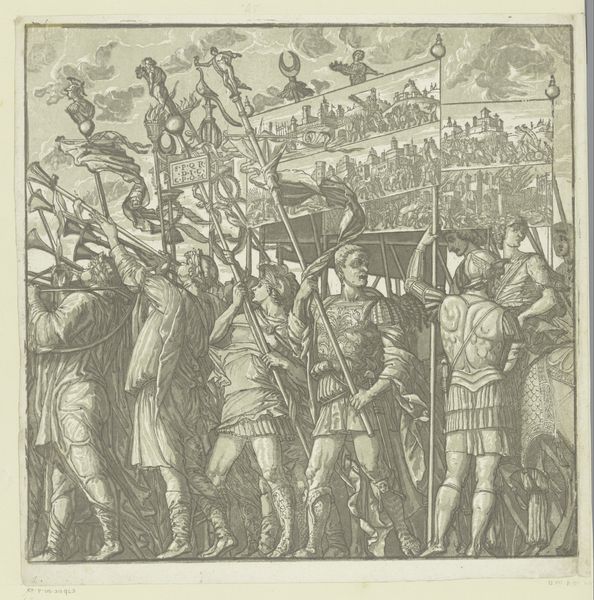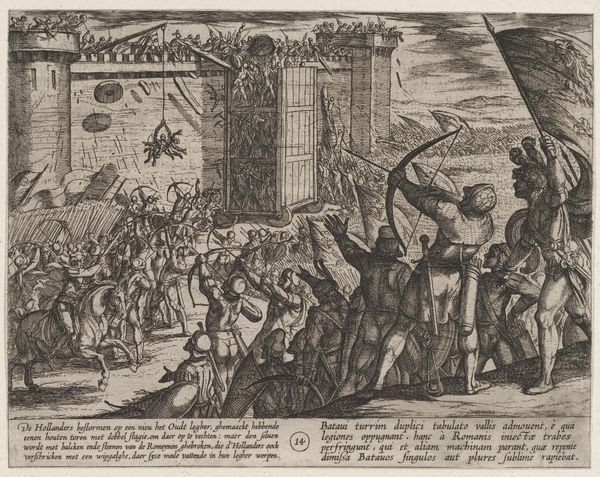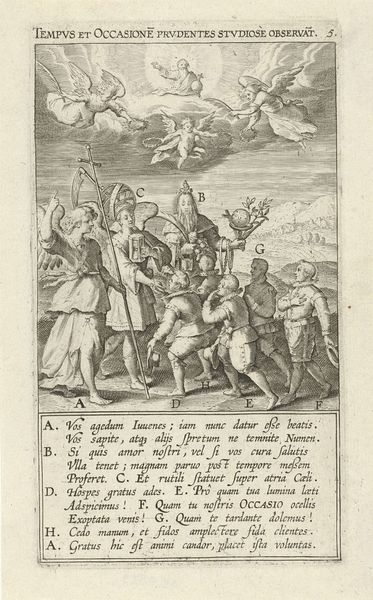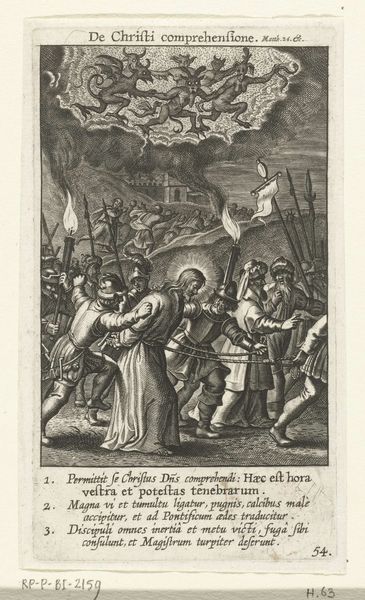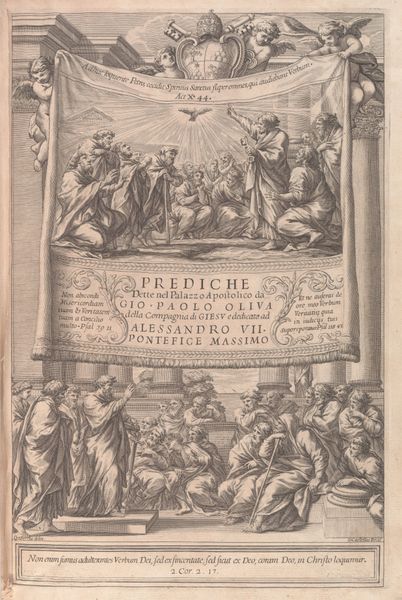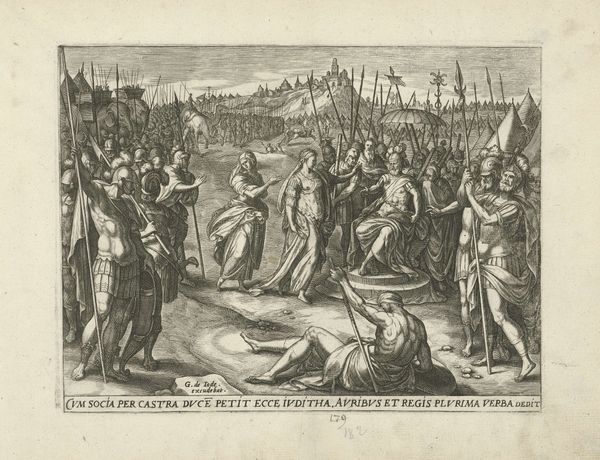
drawing, ink, engraving
#
drawing
#
baroque
#
old engraving style
#
ink
#
history-painting
#
engraving
Dimensions: height 124 mm, width 74 mm
Copyright: Rijks Museum: Open Domain
Editor: This engraving, "Slagveld en overwinningsstoet" or "Battlefield and Victory Parade" by Adriaen Schoonebeek from 1685, uses ink on drawing to depict a very busy scene, brimming with figures, fighting, celebrating - a real clash of chaos and order. The sheer density of it is captivating, and I'm wondering how we might unpack some of its historical context. What do you see in this piece, and how does its context inform our understanding? Curator: What strikes me is the blatant attempt to legitimize power through visual representation. This isn't just about illustrating a historical event; it’s about constructing a narrative of dominance and victory, using the established tropes of Baroque imagery. The strategic arrangement of text in relation to the warring scene suggests an effort to align classical erudition with military might. Have you noticed how the "overwinningsstoet" mirrors almost a theater production? Editor: That's interesting – theater. So, the upper and lower halves feel quite distinct. The parade is so ordered compared to the violent disarray of the battle below. What kind of "theater production" could we compare that upper part to? Curator: Think of state pageantry, performances staged to reinforce the ruler's authority. Look closely – doesn’t the procession seem almost… staged? Schoonebeek uses perspective to create a visual hierarchy. The "victory parade," becomes a spectacle designed for public consumption, influencing the way people perceived power and the role of the state in their lives. Editor: So the drawing’s not necessarily meant to be an accurate record, but a tool for social commentary? Curator: Precisely. This print functions less as objective documentation and more as a carefully constructed piece of propaganda, reflecting the social and political agenda of its time. The depiction of violence romanticizes war, perhaps normalizing it to strengthen civic consciousness about the ruling regime's legitimacy. It's crucial to ask whose interests this representation served and how it might have shaped public opinion at the time. Editor: I hadn't thought about it in terms of active political influence; now it's much clearer how artists played a significant role in constructing collective identity. Curator: Indeed. Analyzing the public role of art offers deep insights into a society's power structures. Seeing "Slagveld en overwinningsstoet" as a product and reflection of those dynamics completely transforms our perspective.
Comments
No comments
Be the first to comment and join the conversation on the ultimate creative platform.
